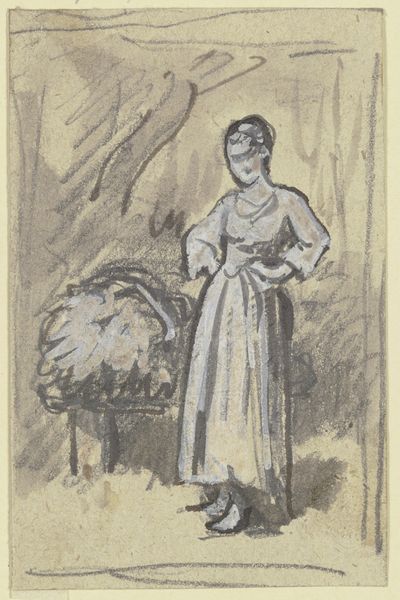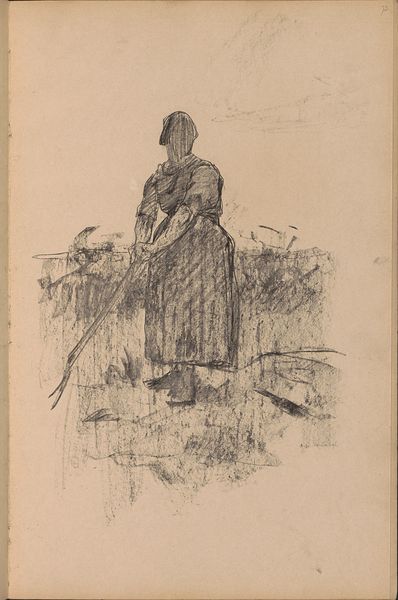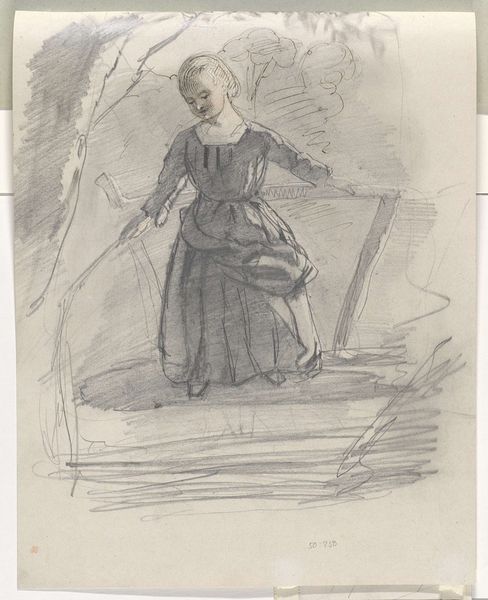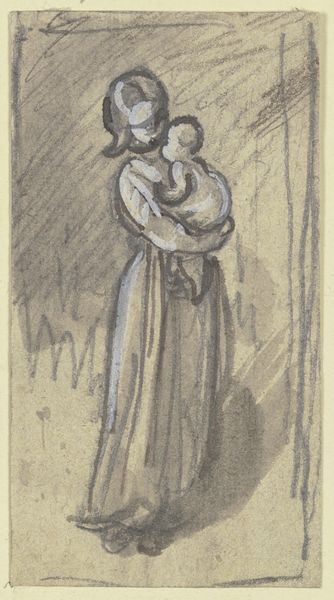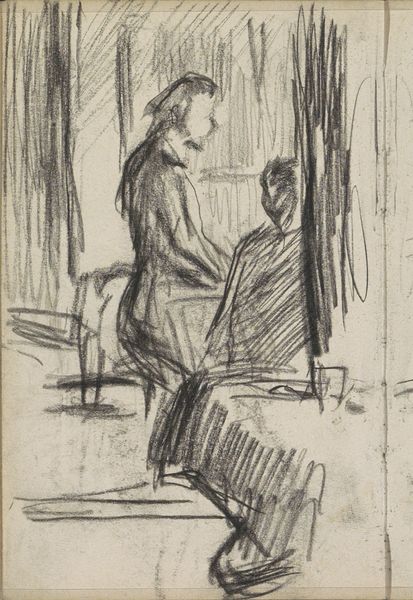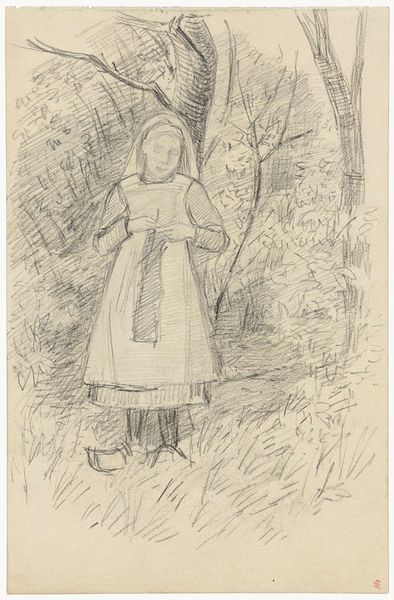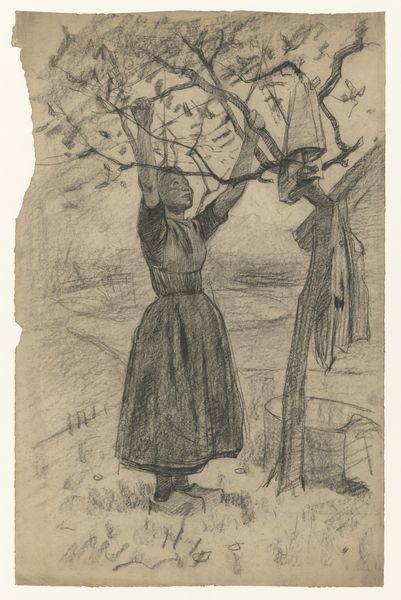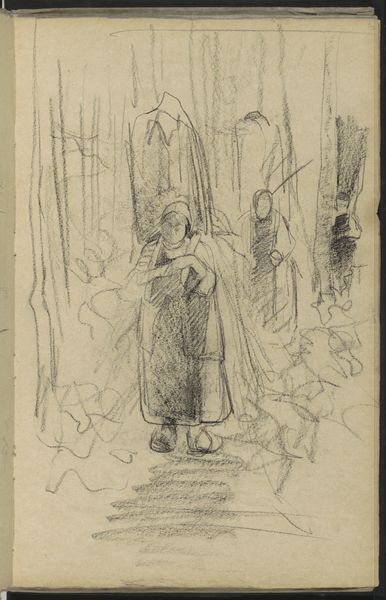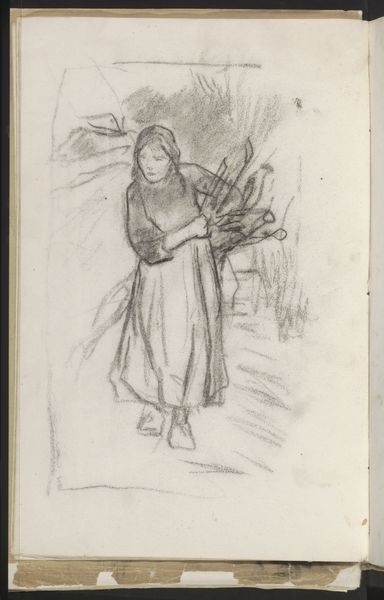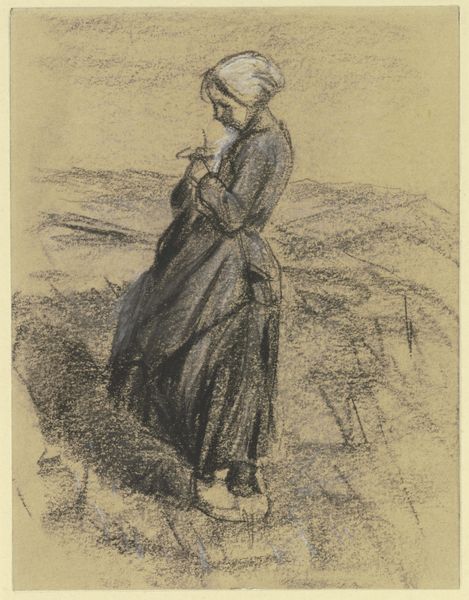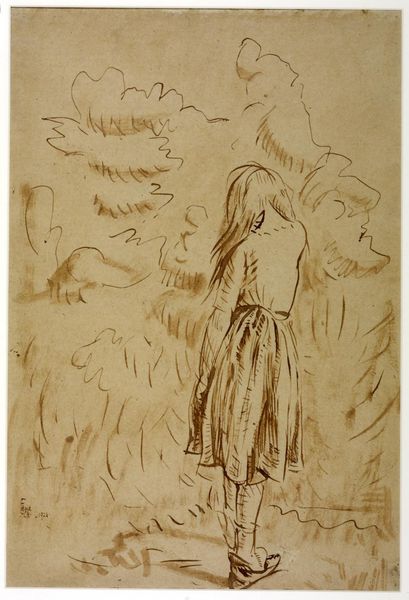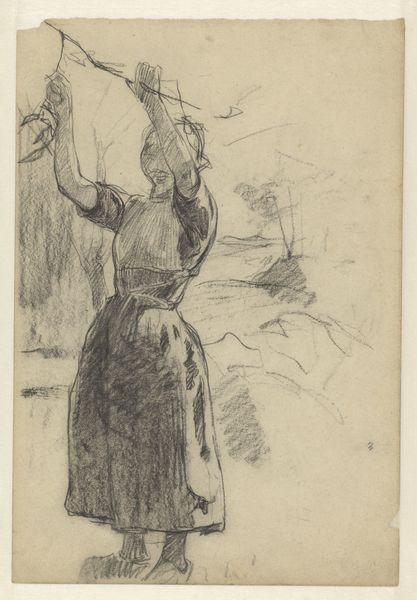
drawing, paper, ink, pencil, pastel
#
portrait
#
drawing
#
16_19th-century
#
figuration
#
paper
#
ink
#
pencil
#
pastel
Copyright: Public Domain
Editor: We’re looking at “Mädchen mit Strohbündel, die linke Hand an die Wange gelegt,” a drawing on paper by Philipp Rumpf. It's hard to put my finger on the date, but I find the pose and expression intriguing - pensive and perhaps a bit melancholy. What strikes you most about this piece? Curator: The vulnerability captured in her stance resonates. It’s key to acknowledge the power dynamics inherent in portraiture, especially when the subject is unnamed and potentially from a lower socioeconomic background. How might the artist's own position influenced the gaze? Editor: So you’re thinking about class and visibility? It's true, she appears against what seems like a rudimentary landscape, almost anonymous. How does the medium—the pencil, ink, and pastel—contribute to this reading? Curator: Exactly. The sketched, almost fleeting quality, achieved through these mediums, denies us a polished, idealized representation. Consider also, that "Mädchen," translating to "girl," likely signifies youth and perhaps limited agency within her societal context. Do you see an intentional rawness? Editor: I think so. The lines are not precise. The use of what looks like gray pastel and pencil contributes to this subdued and almost blurred depiction of reality... a social commentary? Curator: Precisely! And it compels us to examine whose stories are typically told, how, and by whom. This drawing makes us ask important questions about the representation of marginalized figures in 19th century art. Editor: I hadn’t considered that Rumpf was intentionally trying to draw attention to this particular tension, and using the techniques to highlight those social issues. Now I can’t unsee the layered message! Curator: Seeing art as social commentary allows for richer interpretations and discussions about its role in society.
Comments
No comments
Be the first to comment and join the conversation on the ultimate creative platform.
